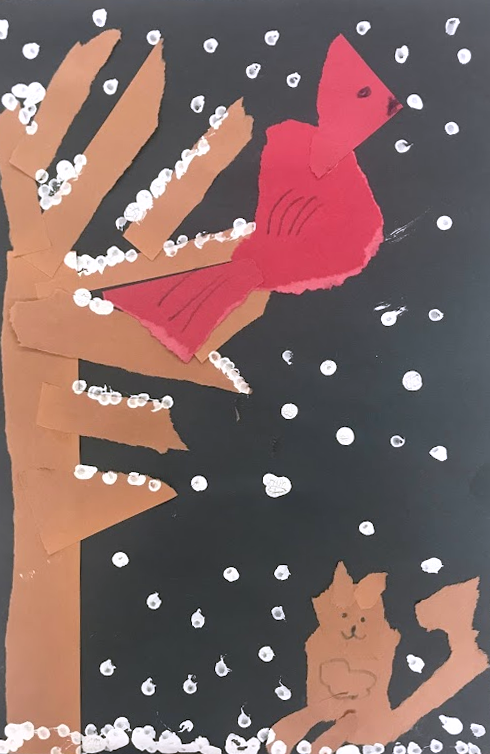Note: This article will use People First Language since we do not know the reader’s preference.
It is well-known that art has many benefits, especially for children. It can lower blood pressure and reduce stress or anxiety. This creative outlet even has social benefits that can help people bond and feel a sense of belonging. These amazing advantages serve everyone in an art community, but those who may prosper the most are our artists with special needs.
Students with special needs may exhibit a range of abilities or exceptionalities in the areas of mobility, speech, learning, development, vision, hearing, and more. In the art room, you may teach a specific adaptive art class, or these students are “mainstreamed” in an inclusive classroom environment. No matter how you organize your classes, one thing is certain. Every student, including those of exceptional ability, deserves a great deal of attention and care in our rooms. Therefore, helping all students succeed in the art classroom should be our number one goal!
Here are seven tips for fostering success for all students in your learning environment.

1. Focus on self-expression or the art experience rather than the end result.
This can enrich the feeling of belonging and create togetherness. In turn, it can make students want to come to your class, lower their inhibitions, and feel welcomed in your care. Sometimes, creating art is the best thing for any student. So, even though they may not be acing that perspective drawing, as long as they enjoy themselves, hit the core objectives, and make an art piece that is meaningful to them, they will be excited to come back for more!
2. Cultivate an environment where students can feel safe.
When artists are secure in their environment, they will be more likely to express themselves freely. This can build any student’s confidence and self-esteem, including those with special needs. This goes back to Maslow’s Hierarchy of Needs, in which one must have basic needs before reaching psychological needs. Note that safety and security are foundational needs, while esteem and creativity are at the higher end of the pyramid. If students do not feel safe, they simply will not learn.

3. Get to know your students.
We have heard this tactic before, but it is extremely useful when working with diverse populations. Understanding individual students’ skill levels, then building lessons around them is a great way to differentiate. Try using this strategy in reverse by finding ways to tell students about yourself. It may encourage them to open up and share more about themselves.
4. Probe and scaffold learning.
Start with simple tasks and activities at the beginning of the year. Observe how the students handle them and then adjust to suit their needs. Starting with the core, foundational objectives with aligning activities will ensure that all students can achieve and will not be singled out. You can always “beef up” a project with the whole class, a small group, or individual students by adding extra constraints or requirements later. Furthermore, students will feel like the objectives and assignments are more attainable because they will be in their zone of proximal development.

5. Offer choices.
Give students choices so they feel they have control. It can also be a great strategy to differentiate learning universally. For example, maybe your class is working on a project that involves cutting and pasting, but you know you have a student who has limited mobility and struggles with scissors. Provide the choice to rip or cut the paper to all students ahead of time.

6. Keep your class material interesting and engaging.
Some artists spend less time working on things as compared to their peers. Therefore, adding a tactile, visual, or auditory component to the lesson can keep them interested for longer. Make the material novel and fun so it sticks out in a learner’s memory.
7. Get creative with manipulating art materials or tools.
Keep thicker crayons on hand or add masking tape around markers or paint brushes for a cheap DIY grip. Consider wrapping bits of paper towels around oil pastels for students with sensory needs. If a lesson’s core objective is on a skill and not a particular medium, provide the option to swap out the supply.
For students with more severe needs, it may be necessary to try drawing, painting, or sculpting using the hand-over-hand method. This is where you physically guide the student by placing your hand over the material in their hand. This way, they can feel a close connection and still have the art experience with that particular medium or process. Speak to your support staff and discuss if this could be a helpful and safe option for a particular student before trying.

Our student artists overcome many challenges daily. Using the tips above can help all students navigate your class with ease and feel more comfortable expressing themselves. Find a way to connect with your students and use what works for you. Tailor techniques to your educating style, match your students’ developmental needs, and adjust as needed. Do not be afraid to try something new and assess how it went, even if you felt like it was a total flop. No matter how your students achieve the artmaking goal at hand, remember that every child artist, including those with special needs, is excited to learn with you! Find a way to join them on their creative and artistic journey.
Which of the strategies above have you found success with?
Share a tip you employ to make art accessible to all students in your studio.




